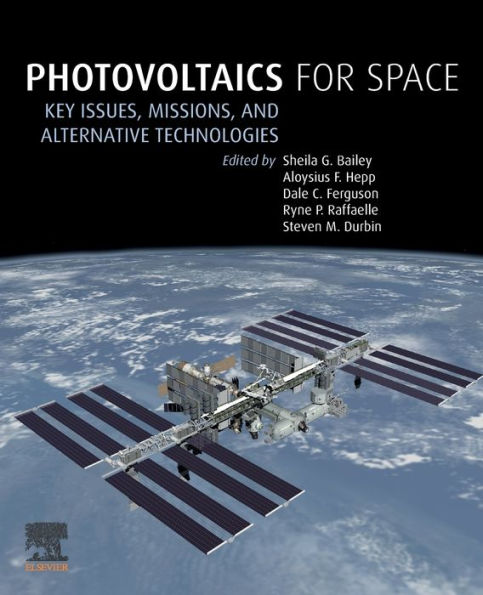Photovoltaics for Space: Key Issues, Missions and Alternative Technologies
PV has traditionally been used for electric power in space. Solar panels on spacecraft are usually the sole source of power to run the sensors, active heating and cooling, and communications. Photovoltaics for Space: Key Issues, Missions and Alternative Technologies provides an overview of the challenges to efficiently produce solar power in near-Earth space and beyond: the materials and device architectures that have been developed to surmount these environmental and mission-specific barriers. The book is organized in four sections consisting of detailed introductory and background content as well as a collection of in-depth space environment, materials processing, technology, and mission overviews by international experts. This book will detail how to design and optimize a space power system’s performance for power-to-weight ratio, effectiveness at end of operational life (EOL) compared to beginning of operational life (BOL), and specific mission objectives and goals.
1140792897
This book outlines the knowledge required for practitioners and advanced students interested in learning about the background, materials, devices, environmental challenges, missions, and future for photovoltaics for space exploration.
Photovoltaics for Space: Key Issues, Missions and Alternative Technologies
PV has traditionally been used for electric power in space. Solar panels on spacecraft are usually the sole source of power to run the sensors, active heating and cooling, and communications. Photovoltaics for Space: Key Issues, Missions and Alternative Technologies provides an overview of the challenges to efficiently produce solar power in near-Earth space and beyond: the materials and device architectures that have been developed to surmount these environmental and mission-specific barriers. The book is organized in four sections consisting of detailed introductory and background content as well as a collection of in-depth space environment, materials processing, technology, and mission overviews by international experts. This book will detail how to design and optimize a space power system’s performance for power-to-weight ratio, effectiveness at end of operational life (EOL) compared to beginning of operational life (BOL), and specific mission objectives and goals.
This book outlines the knowledge required for practitioners and advanced students interested in learning about the background, materials, devices, environmental challenges, missions, and future for photovoltaics for space exploration.
250.0
In Stock
5
1

Photovoltaics for Space: Key Issues, Missions and Alternative Technologies
534
Photovoltaics for Space: Key Issues, Missions and Alternative Technologies
534
250.0
In Stock

Product Details
| ISBN-13: | 9780128233009 |
|---|---|
| Publisher: | Elsevier Science |
| Publication date: | 10/26/2022 |
| Pages: | 534 |
| Product dimensions: | 7.50(w) x 9.25(h) x 1.08(d) |
About the Author
What People are Saying About This
From the B&N Reads Blog
